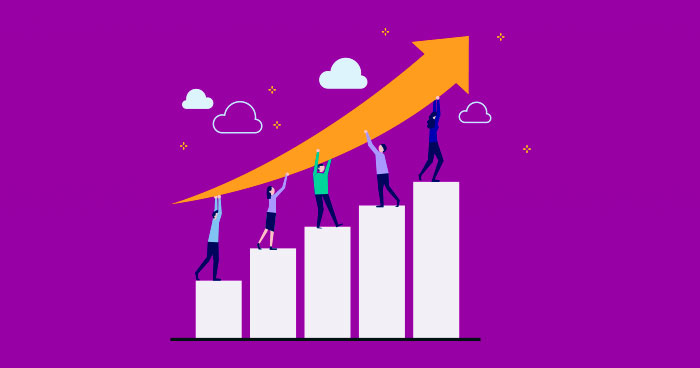The buzz around AI in software development often gravitates towards its ability to generate code. While undeniably impactful, this focus merely scratches the surface of AI’s transformative power. Artificial intelligence is not just a coding assistant; it’s a fundamental force redefining every stage of the Software Development Life Cycle (SDLC) for custom software, from initial ideation to ongoing maintenance. This shift promises to accelerate development, enhance quality, and empower teams to focus on higher-value tasks.
Let’s explore how AI is revolutionizing each phase:
1. Requirements: From Ambiguity to Actionable Insights
Traditionally, requirements gathering has been a labor-intensive and often ambiguous process, prone to misinterpretations and inconsistencies. AI is changing this by bringing unprecedented clarity and efficiency:
- Intelligent Elicitation and Analysis: AI-powered tools leverage Natural Language Processing (NLP) to analyze stakeholder inputs, meeting transcripts, and existing documentation. They can identify inconsistencies, ambiguities, and gaps in requirements, flagging potential issues before they become costly problems.
- Predictive Insights: By analyzing historical project data and market trends, AI can predict future needs, potential risks, and resource requirements, helping teams define more robust and forward-looking requirements.
- Automated Prioritization and Traceability: AI can assist in prioritizing requirements based on factors like business value, feasibility, and impact. Furthermore, AI-driven solutions automate traceability, linking requirements to design elements, test cases, and deployment artifacts, ensuring a clear audit trail and reducing manual effort.
- User Story and Use Case Refinement: AI can refine user stories and use cases, ensuring they accurately capture end-user needs and align with overall project goals.
2. Design: Architecting the Future, Intelligently
The design phase, once a highly manual and experience-driven endeavor, is now benefiting from AI’s ability to analyze patterns and generate optimal solutions:
- Automated Architecture Generation: AI can analyze project requirements and recommend optimal architectural patterns, such as microservices, and generate initial system designs, UI mockups, and wireframes based on best practices and user preferences.
- Component and API Recommendation: Leveraging vast repositories of existing code and components, AI can suggest reusable modules and APIs, accelerating development and promoting consistency.
- Performance and Scalability Simulation: AI tools can simulate various scenarios to predict how different design choices will impact performance, scalability, and security, allowing designers to make data-backed decisions.
- Documentation Generation: AI can automatically generate design documents and diagrams, ensuring comprehensive and up-to-date documentation that minimizes miscommunication between teams.
3. Testing: Beyond Automation, Towards Autonomy
AI is transforming software testing from a bottleneck into a highly efficient and intelligent process:
- Intelligent Test Case Generation: AI algorithms analyze code, requirements, and user behavior to automatically generate comprehensive test cases, including unit, integration, and even complex end-to-end scenarios. This significantly reduces the time and effort spent on manual test creation.
- Self-Healing Tests: One of the most significant advancements, AI-powered tools can automatically adapt test scripts to UI changes or application updates, minimizing test maintenance and reducing false positives.
- Anomaly Detection and Predictive Testing: AI monitors application performance in real-time, identifies anomalies, and can predict potential issues before they impact users. It analyzes vast amounts of test data to pinpoint root causes of defects and suggest fixes.
- Visual Regression Testing: AI-powered visual testing tools can detect subtle visual discrepancies that might go unnoticed by human testers, ensuring a flawless user experience.
- Automated API and Performance Testing: AI streamlines API testing by generating test cases for various edge cases and errors, and it can simulate user behavior under different loads to proactively identify performance bottlenecks.
4. Deployment: Seamless Transitions with AIOps
Deployment, traditionally a complex and error-prone stage, is becoming more streamlined and reliable with the integration of AI:
- AI-Driven CI/CD Pipelines: AI optimizes Continuous Integration/Continuous Deployment (CI/CD) pipelines by automating routine tasks, predicting potential issues, and intelligently managing releases. This includes automating builds, tests, and deployments, and even suggesting rollbacks if issues arise.
- Resource Optimization: AI can optimize resource allocation in cloud environments, ensuring efficient utilization and cost savings during deployment and operation.
- Anomaly Detection in Production: Post-deployment, AI continuously monitors application health metrics and logs in real-time. It can detect deviations from normal behavior, identify potential problems, and trigger automated remediation actions or alerts.
- Predictive Incident Management: By analyzing past incidents and system data, AI can predict when and where failures might occur, allowing teams to proactively address issues before they escalate.
5. Maintenance: Proactive, Adaptive, and Self-Healing Software
Software maintenance, often the longest and most costly phase, is being revolutionized by AI’s ability to learn and adapt:
- Predictive Maintenance: AI analyzes performance metrics, log data, and user feedback to anticipate potential bottlenecks, bugs, or system failures. This enables proactive intervention and reduces downtime.
- Automated Bug Fixing and Code Refactoring: While still evolving, AI is capable of suggesting targeted fixes for identified issues and even recommending optimal refactoring strategies to improve code quality and performance over time.
- Intelligent Support Systems: AI-powered chatbots and virtual assistants can handle common user queries, provide self-service documentation, and intelligently escalate complex issues to human teams, improving user satisfaction and reducing support load.
- Continuous Learning and Adaptation: AI models integrated into software can continuously learn from user interactions and environmental changes, enabling the application to adapt and improve its performance and features autonomously.
The Human Element: Enhanced, Not Replaced
It’s crucial to understand that AI is not here to replace human developers, but to augment and empower them. By automating repetitive, mundane, and data-intensive tasks across the SDLC, AI frees up human creativity, critical thinking, and problem-solving skills. Developers can now focus on complex design challenges, innovative solutions, and strategic decision-making, leading to higher-quality custom software delivered at an unprecedented pace.
The future of custom software development is an AI-native one, where intelligent systems work in synergy with human expertise to build robust, resilient, and truly innovative applications. The era of beyond code generation is here, and it’s redefining what’s possible in the world of software.




